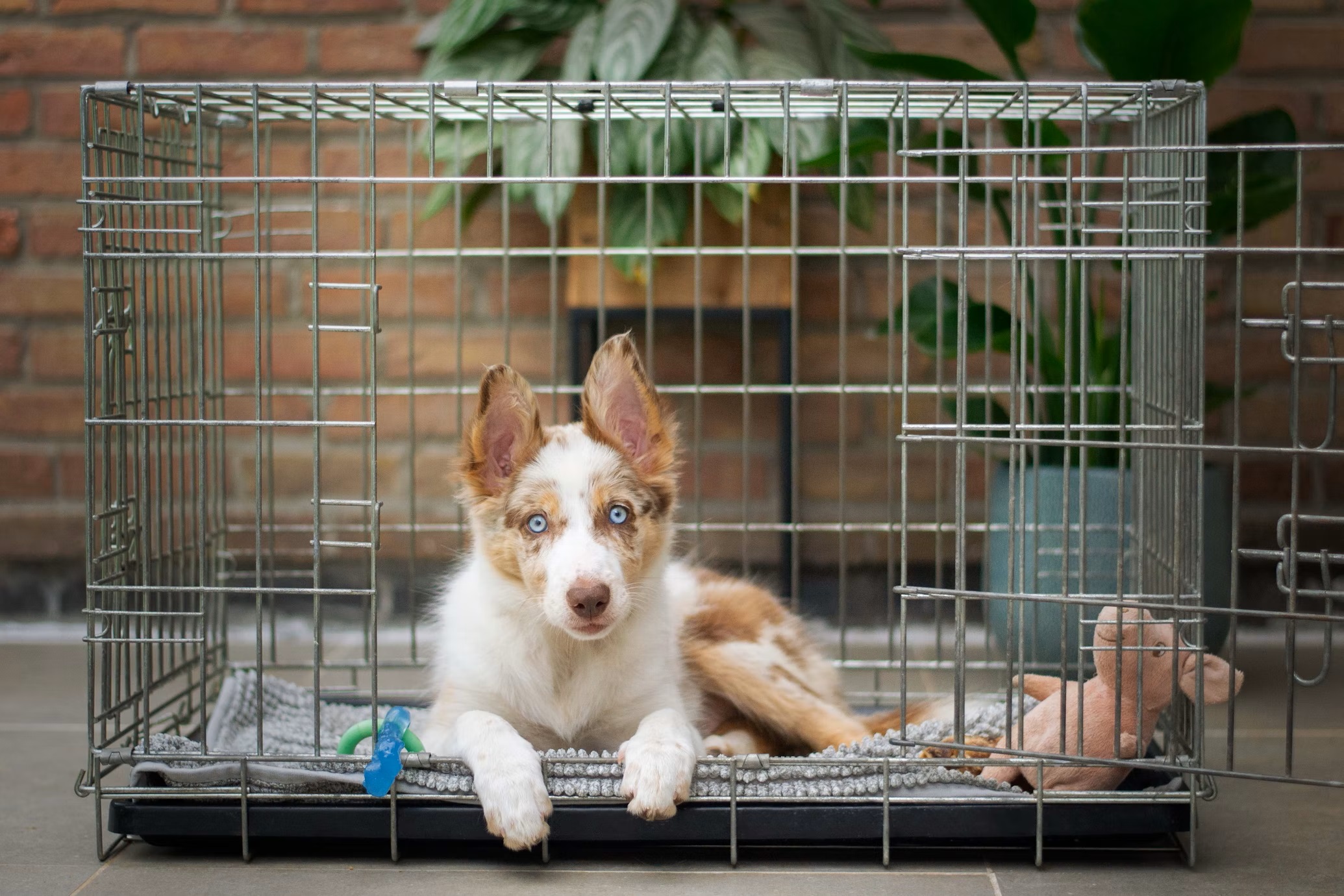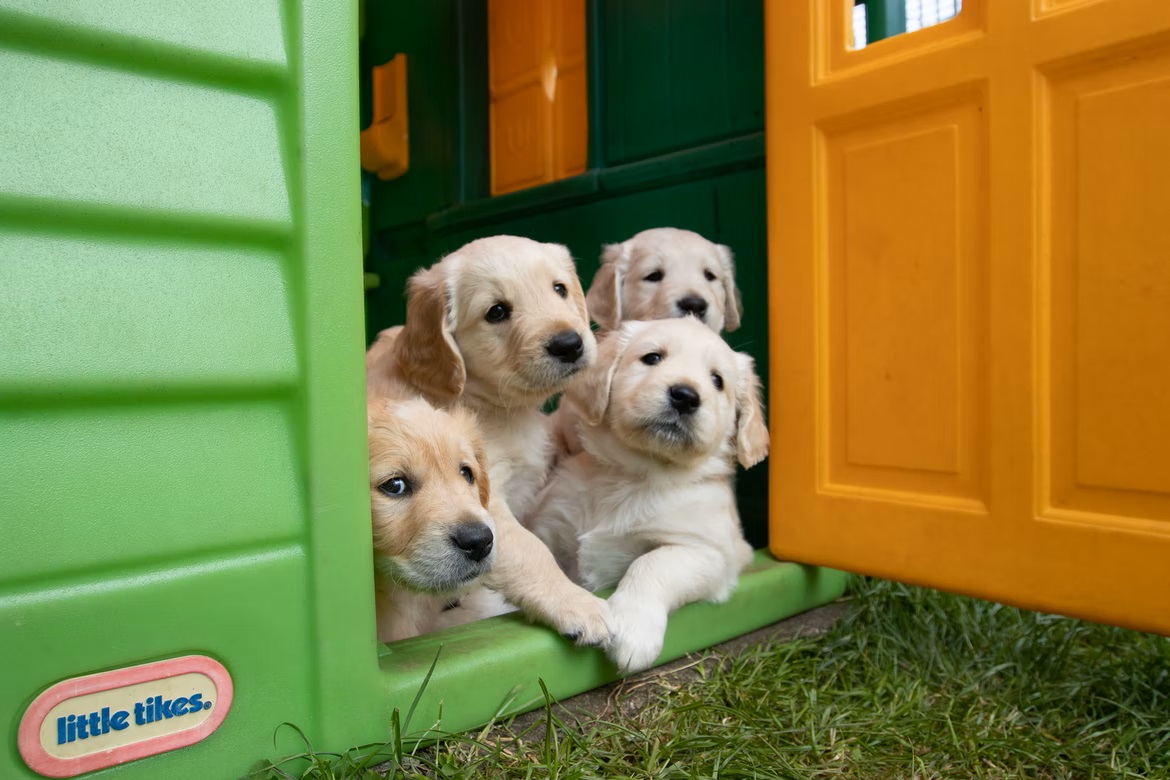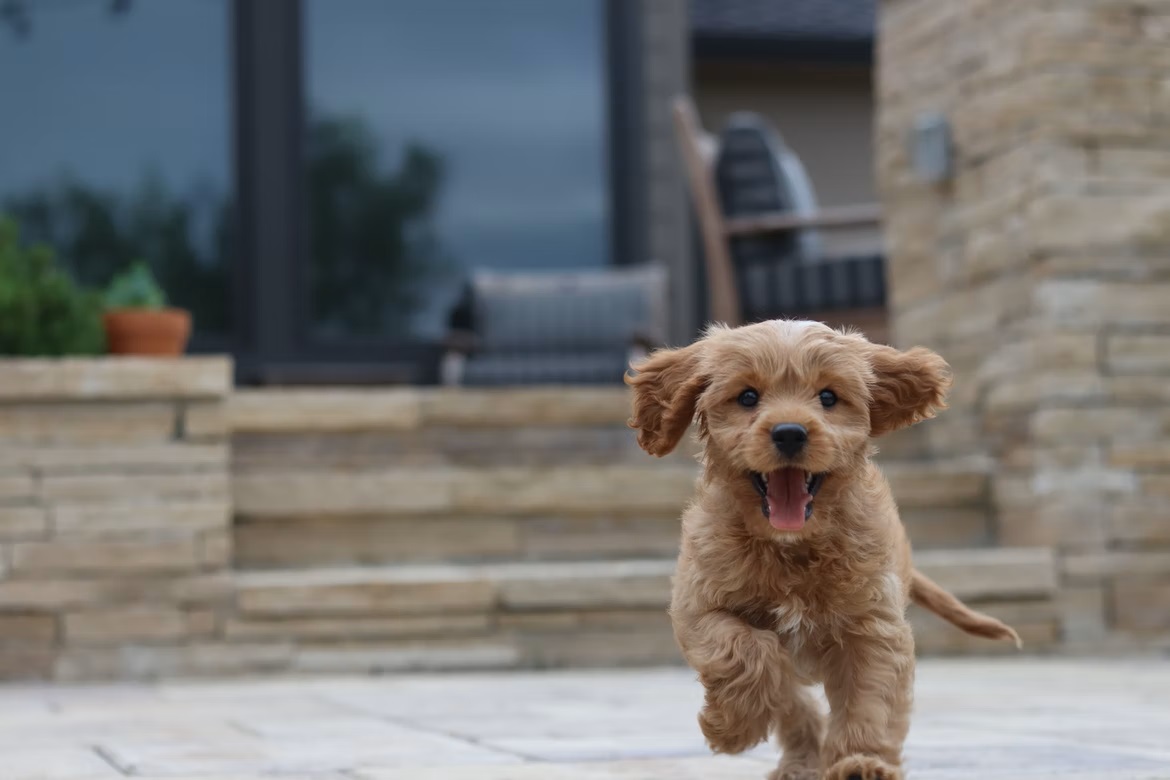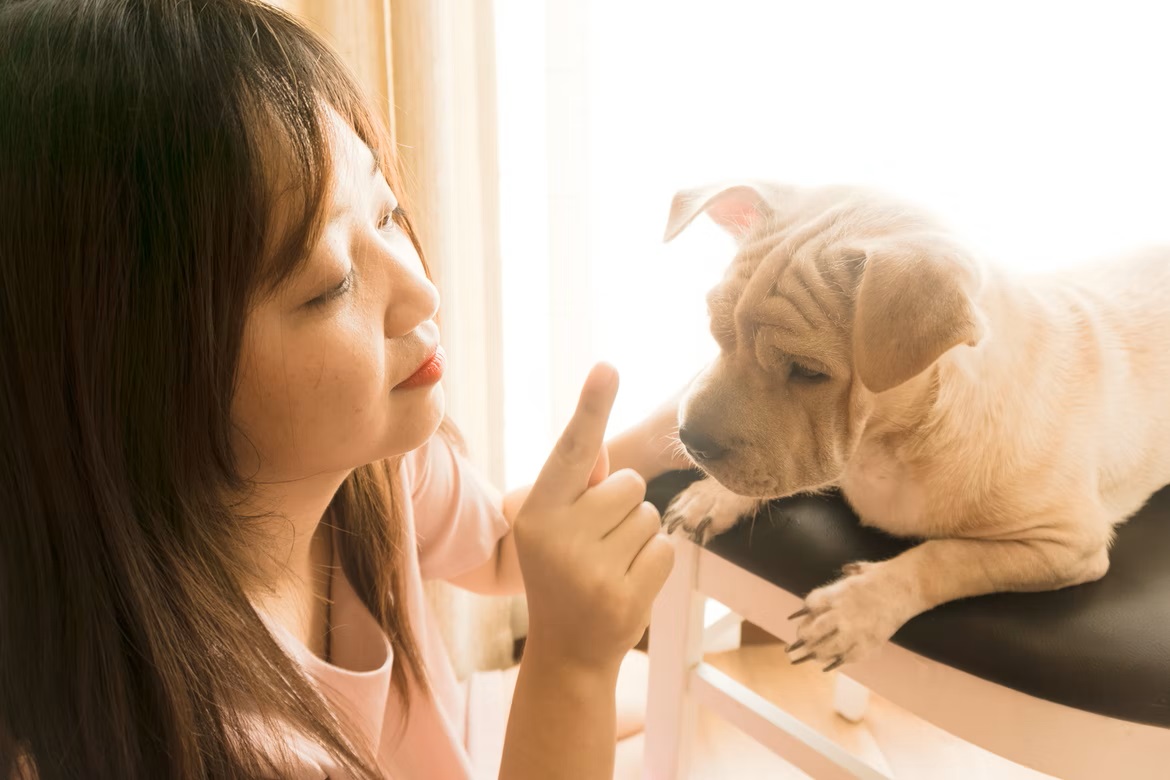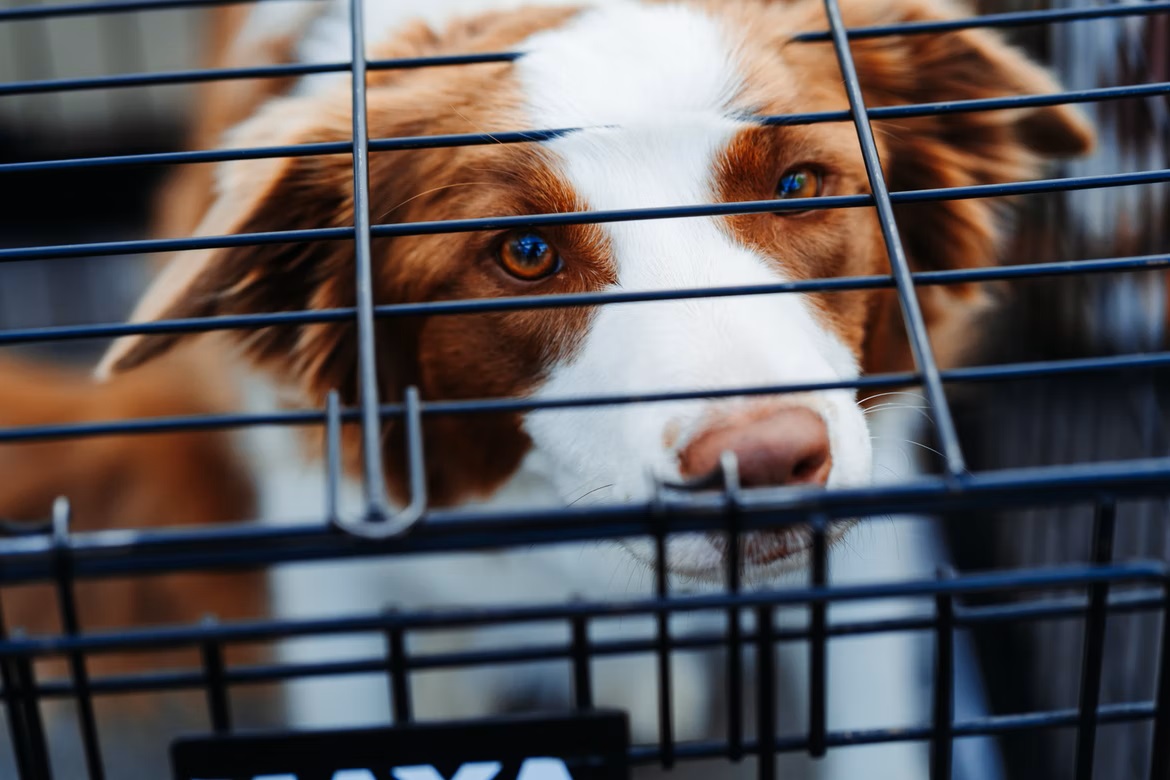How To Crate Train A Puppy?
One of the biggest problems we have regarding dogs is training them properly. Now, there’s an easier way to train your dog to do what you want. Dog crates are a great way to train dogs and force them to behave when they’re puppies.
Crate training a dog is an excellent way to provide protection for your pet and make life easier for you. Dogs love their crates for many reasons, and we’ll get into all of them in this blog post. This isn’t just about information though; it’s also about how to best choose a dog crate for your dog and how to train your pet.
How To Select a Crate
When selecting a dog crate, you should consider the size of your dog and the amount of space you have available in your home. The right crate should be large enough for your dog to stand up, lie down, stretch out and turn around comfortably.
Before making any purchase, you should measure your dog carefully. You can use their height and weight as a guide, but don’t forget to take into account their length. The length is especially important if you’re buying a wire cage or one with a plastic pan.
Crates come in three basic styles: wire cages, plastic crates, and soft-sided crates (like airline carriers). Each has its advantages and disadvantages:
Wire Cages
Wire cages are sturdy and durable, but they don’t provide much ventilation for your pet. Wire cages can be made from metal or plastic rods; metal ones tend to be sturdier than plastic ones.
Plastic Crates
Plastic crates are lightweight and easy to move around but not very sturdy or durable. Plastic crates are also more difficult than metal ones for your pet to escape from (which could be good if he’s being crate trained). Plastic crates usually have handles so they can be carried easily by one person. A few models have wheels at one end so they
Soft-Sided Crates
Soft-sided dog crates are an alternative to traditional wire dog crates. Soft-sided crates are often preferred by pet owners who like the look of a soft crate better, or who want to use them for travel. The soft fabric makes it easy to fold up and take on the go. Soft-sided crates are typically made from mesh, which allows more airflow than a wire crate but still keeps your dog safe and secure.
Another thing to keep in mind when choosing a crate is whether or not you want to be able to use it with an airline carrier so you can take your pet with you on trips. If this sounds like something that would interest you, then make sure the crate has easy access through both doors and windows with plenty of ventilation so there isn’t any risk of suffocation while flying.
How To Crate a Puppy
Crate training is an excellent way to teach your puppy or dog to spend time alone. It will keep him safe and secure when you are not home and can also help him learn to relax on his own.
Step by Step Instructions:
1) Place the crate in an area of your home that is not used much and away from distractions. Make sure the crate is large enough for your puppy to stand up, turn around and sit comfortably in it. You may need a bigger crate once your puppy has grown a bit more.
2) Put some newspapers down on the floor of the crate so that your puppy does not have to lie on any surface that might be uncomfortable or dirty. If you want to use a pad as well, place it inside the crate before placing him inside so he will not chew it up while he’s still learning how to use his new den.
3) Place food and water bowls near his bedding in the crate so he can eat and drink whenever he wants without having to come out of his den if you are gone for long periods of time each day. Also, make sure there are no toys inside the crate when you first introduce it because they may become associated with playtime instead of resting time.
4) Place some treats or food inside the crate and shut the door so that he can see them through the bars. Then let him out of the crate, praise him for going into his crate voluntarily and give him one of his treats as a reward for entering his new den.
5) Repeat this exercise several times during the day until your puppy jumps into his den every time you shut its door behind him.
Benefits of Crate Training
Reduces Anxiety
Dogs who do not like being left alone can benefit from crate training because it will help them feel more secure in your absence. It is also a good way to keep your dog safe when you cannot supervise them, such as when you go out for errands or at night when you go to sleep.
Helps Potty Train Faster
Many pet owners use crates as a tool for potty training their pups because it makes it easier for them to tell if their dog has used the bathroom inside or outside (as long as they cleaned up after themselves). If the crate is big enough, many dogs will prefer going potty outside rather than inside their crates so they’ll be more likely to go outside on walks too!
Potential Problems When Crating A Dog
Whining
Dogs may whine and bark when they are left alone in their crates. This is not necessarily a sign of separation anxiety, but rather a way for the dog to communicate with you. Dogs can become so frustrated that they resort to whining and barking as a way to get your attention. If you have taught your pup to be quiet while in his crate, then this type of behavior will not occur very often.
If your dog barks or whines while you are gone, try leaving him with some toys or treats as well as some water and food so he does not go hungry or thirsty during his confinement period. This will help keep him occupied while you are away from home.
Separation Anxiety
Separation Anxiety is a potential problem when crating a dog. Many dog owners choose to crate their dogs when they leave the house, but the anxiety that some dogs experience from being crated can cause them to damage their crates or attempt to escape.
If you are going to crate your dog, it is important to do so properly. Use these tips for making sure that your dog does not suffer from separation anxiety while he is in his crate:
Make sure that your dog has had plenty of time to adjust to his crate before you begin leaving him there for long periods of time. The more comfortable he is with his crate, the less likely he will have separation anxiety when left inside.
Use positive reinforcement training techniques while working with your dog on getting used to being in his crate. These methods include rewarding him with treats or praise when he enters the crate or after he has been inside for a few minutes without any problems.
Aggressiveness
Aggressiveness is a potential problem when crating a dog. It’s important to know your dog’s personality and use caution when selecting a crate size and type.
Aggressive dogs should be trained to accept confinement calmly before being placed in a crate. Dogs that are already aggressive toward people or other pets may not be able to tolerate being crated, even if they’ve been trained. Aggressive dogs should never be left unattended in a crate.
Is It Cruel to Crate a Dog?
Dog crates are a controversial topic in dog training circles. They’re also one of the most effective tools you can use to train your dog to do anything from sitting still to going potty on command. But is it cruel to crate a dog?
When used properly, crate training has several benefits for both dogs and their owners. It can help you potty train your puppy faster, teach him not to chew on things he shouldn’t, and keep him safe when he’s home alone. In fact, many experts say that using crates properly can actually improve your relationship with your pup!
Take a peek at this 8-minute clip on How to Crate Train a Puppy through better communication:

